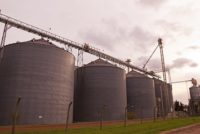Category: Special Topics in Safety Management
Safety is a process, and as such, needs to be managed. This section offers resources to create a viable safety program, sell it to senior management, train supervisors and employees in using it, and then track and report your progress. Look also for ways to advance your own skills in these areas, both for your current job, and those that follow.
Workplace violence can happen to any worker in any industry. The Occupational Safety and Health Review Commission (OSHRC) recently reaffirmed that violence in the workplace is a recognizable hazard, and employers are responsible for protecting employees from assaults and homicides.
Welding — one of the OSHA-defined “hot work” activities — is a major task in many industries. You’ll find it performed in manufacturing, fabrication, and repair work. In fact, anywhere two or more materials must be joined together, welding will likely be present.
Regulatory compliance is a big part of any workplace safety program—but as every safety professional knows, there is a very human side to safety as well. At the EHS Daily Advisor’s upcoming 2019 Safety Summit, we are going to be talking about both! Here are some of the many benefits of attending, from our inspirational […]
The California Division of Occupational Safety and Health (Cal/OSHA) cited a Santa Ana, California, ceramic materials manufacturer for willful failure to guard machinery after an employee was fatally injured. The agency is seeking more than $250,000 in penalties for the cited violations.
In a congressional hearing, a lineup of advocates for worker safety faulted the way the EPA is using its new authority under the 2016 amendments to the Toxic Substances Control Act (TSCA) to shield workers from the occupational exposure to hazardous chemicals.
Grain engulfment is one of the most serious, sometimes fatal, safety and health hazards in the agriculture and grain and feed processing industries. OSHA and its industry partners are sponsoring a “Stand-Up for Grain Safety Week,” March 25–29, to alert workers to grain handling hazards.
Join us in recognizing our latest group of runners-up for our EHS Daily Advisor Safety Standout Awards, which highlight companies and safety professionals who excel in making their workplaces safer. These outstanding professionals and companies will receive an honorable mention at our awards ceremony at the upcoming 2019 Safety Summit.
OSHA uses the General Duty Clause of the Occupational Safety and Health Act (OSH Act) as a “gotcha” or “catchall” for hazards with no established standards, the members of a federal review board recently said.
The U.S. Chemical and Safety Hazard Investigation Board (CSB) recently released a Safety Spotlight recommending that employers closely apply industry consensus standards to safeguard employee and public safety. Titled “The Importance of Industry Safety Guidelines, Codes, and Standards,” the report highlights the CSB’s role in accident investigation and focuses on several safety codes and standards […]
The single greatest hazard to your employees may be largely outside your control. It’s not hazardous machinery, working at heights, or dangerous chemicals. It’s driving.










